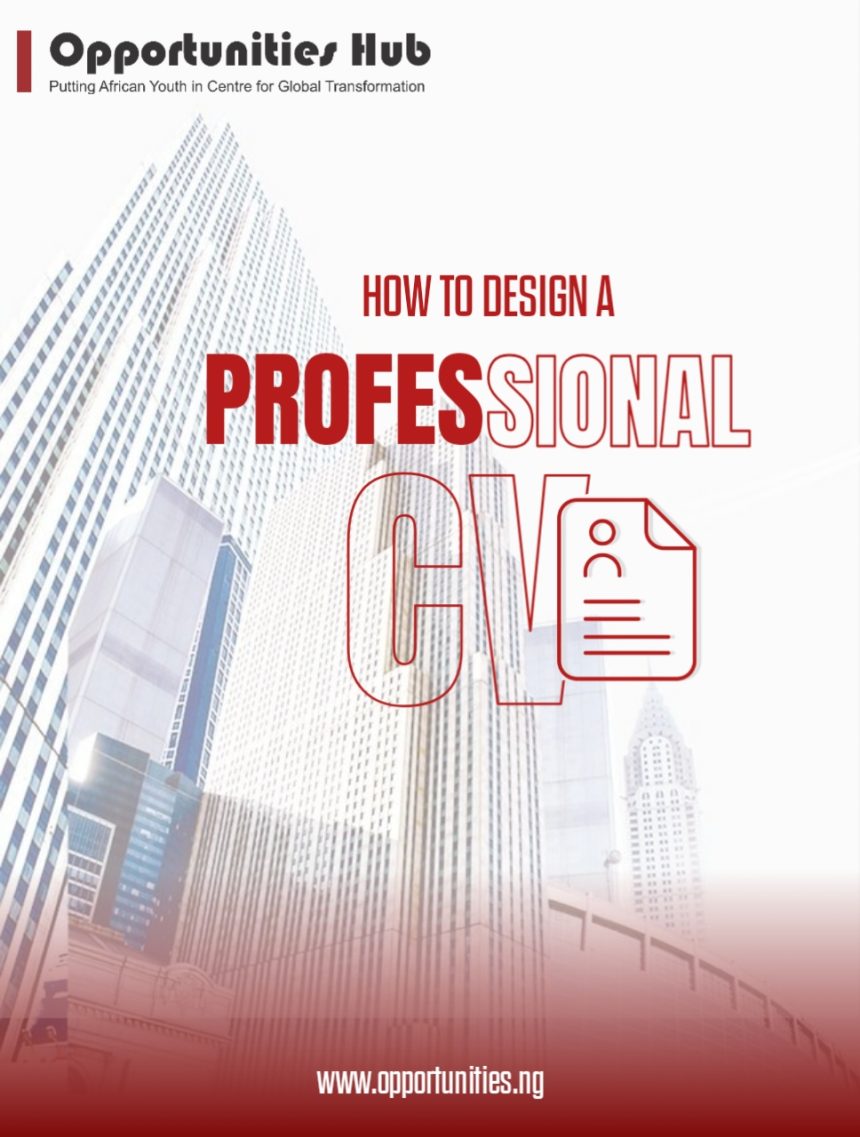Your Curriculum Vitae (CV) is your first impression on potential employers. A well-designed, professional CV can open doors to job interviews and career opportunities. Whether you’re a fresh graduate or an experienced professional, crafting an outstanding CV is essential.
In this guide, we’ll walk you through the key steps to designing a professional CV, including structure, formatting tips, and common mistakes to avoid.
Why a Professional CV Matters
A CV is more than just a summary of your work history—it’s a marketing tool that highlights your skills, experience, and achievements. A strong CV:
Grabs the recruiter’s attention quickly
Showcases your qualifications effectively
Increases your chances of landing an interview
Key Sections of a Professional CV
1. Contact Information
- Full Name
- Professional Title (e.g., “Digital Marketing Specialist”)
- Phone Number
- Professional Email Address (avoid nicknames)
- LinkedIn Profile / Portfolio (if applicable)
- Location (City & Country)
Tip: Avoid including personal details like age, marital status, or photos unless required.
2. Professional Summary (or Career Objective)
A short paragraph (3-4 lines) summarizing your expertise and career goals.
Tailor it to the job you’re applying for.
Example:
Results-driven Digital Marketer with 5+ years of experience in SEO, content strategy, and social media management. Proven track record of increasing organic traffic by 50% for leading brands. Seeking to leverage expertise in a growth-focused marketing role.
3. Work Experience
List jobs in reverse chronological order (most recent first).
Include Job Title, Company Name, Dates of Employment, and Key Responsibilities.
Use bullet points for clarity.
Focus on achievements (use numbers where possible).
Example:
Digital Marketing Manager
XYZ Company | Jan 2020 – Present
Increased website traffic by 60% through SEO optimization.
Managed a team of 5 marketers, improving campaign ROI by 35%.
4. Education
Degree Name, University, Graduation Year
Relevant certifications (if applicable)
Example:
MBA in Marketing
ABC University | 2018
5. Skills
List hard skills (technical) and soft skills (interpersonal).
Match them to the job description.
Example:
SEO & SEM Marketing
Google Analytics & Ads
Content Strategy
Leadership & Team Management
6. Additional Sections (Optional but Impactful)
Certifications (e.g., Google Analytics, PMP)
Projects (if relevant to the job)
Languages (if multilingual)
Volunteer Work (shows initiative)
Publications/Awards (for academic/research roles)
Design & Formatting Tips for a Professional CV
Keep it Clean & Readable – Use a simple, professional font (Arial, Calibri, or Times New Roman).
Use Consistent Formatting – Bold headings, bullet points, and proper spacing.
Stick to 1-2 Pages – Unless you have extensive experience, keep it concise.
Use Keywords – Many companies use ATS (Applicant Tracking Systems) to scan CVs for keywords.
Save as PDF – Ensures formatting stays intact.
Common CV Mistakes to Avoid
Spelling & grammar errors (always proofread!)
Long paragraphs (use bullet points)
Irrelevant information (tailor your CV to the job)
Unprofessional email (e.g., coolguy123@email.com)
Too many colors/graphics (unless applying for a creative role)
Final Thoughts
A professional CV is your ticket to landing interviews. By following these guidelines, you can create a compelling CV that stands out to recruiters.
For more career tips, follow Opportunities Hub and stay updated with the latest job search strategies!


